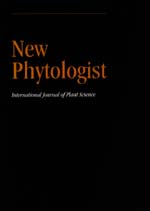Article contents
Ozone and forest trees
Published online by Cambridge University Press: 01 May 1998
Abstract
Current estimates of forest yield losses attributable to ozone pollution amount to c. 10% over Europe as a whole. This figure is derived from a synthesis of all European studies using trees for which AOT40 exposure values are available. However, the choice of 40 nl l−1 as the threshold concentration for demonstrable effects has led to debate, and this value might not be low enough to predict ozone effects in Scandinavia, where concentrations are lower than in southern Europe, and chronic injury resulting from cumulative exposure is observed. This ‘level I’ approach provides a useful means for mapping physiologically effective concentrations but has significant shortcomings in that it is unable to take environmental conditions into account. In order to produce a mechanism capable of predicting yield losses resulting from ozone pollution at specific sites and for individual species, the effective ozone dose, a product of conductance and concentration, must be calculated. Process-based models relating the environment (temperature, humidity/saturation deficit, incident light and soil moisture content) to conductance are available for a number of species (oak, Scots pine, Norway spruce, Sitka spruce, beech and poplar). Effective ozone doses could therefore be calculated, and the relationships between effective dose and yield loss could be determined by revisiting existing data for which only concentrations or AOT40 values are available at present. Yield loss must be the growth parameter with which ozone damage is expressed, since visible injury does not necessarily represent severe injury to the plant, whilst visibly unaffected plants may be significantly compromised in terms of biomass accumulation. For conifers, premature needle drop, although indicative of ozone pollution, might not represent a significant reduction in growth since older needles are, functionally, relatively unimportant.
When revisiting old experiments the question should also be asked ‘what is an appropriate control treatment’. It is unrealistic to expect ambient O3 concentrations on a global scale to return to pre-industrialization levels, and therefore the use of a charcoal-filtered treatment is probably unrealistic. In addition, charcoal filters will remove some of the NOx, and therefore on nutrient deficient soils (typical of many forest soils) the ‘control’ treatment might represent a reduced supply of nitrogen, making it difficult to disentangle the ozone effect per se.
The stage has therefore been reached where ‘level II’ ozone exposure mapping (i.e. based on effective dose at the physiological level) is possible for a number of species. As financial considerations become increasingly important, the scientific community must aim to provide better estimates of O3-induced yield losses so that long-term environmental audits can be performed.
- Type
- Research Article
- Information
- Copyright
- © Trustees of New Phytologist 1998
- 34
- Cited by


